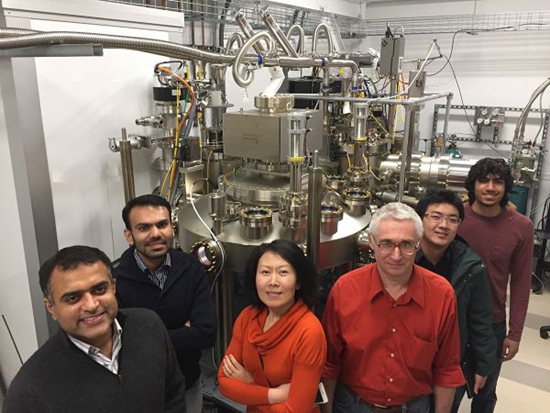News
The US team with the shortest wavelength develops high-efficiency deep UV LED
Known as a killer, UV-C ultraviolet light has a wavelength of only 200 to 280 nanometers and high energy. It can penetrate the film of viruses, bacteria, fungi and dust, attack DNA and destroy these harmful organisms.
Since Danish Professor Niels Finsen found that ultraviolet light can cure tuberculosis, human beings have used ultraviolet light to kill bacteria for more than a century. However, the current deep ultraviolet lamps are not only bulky and inefficient, but also contain mercury, which is harmful to the environment.
The research team of Cornell University in the United States has recently developed a small and more environmentally friendly deep UV LED light source (the current technology of Danfeng lighting is filament light source), which has set a record for the lowest wavelength of deep UV LED in the industry.

The picture shows the members of the research team. Photo source: Cornell University
The researchers used gallium nitride (GAN) and aluminum nitride (AlN) monolayers at the atomic level control interface as the reaction area, and successfully emitted deep UV LEDs with wavelengths ranging from 232 to 270 nm. This 232 nanometer deep ultraviolet light sets a record for the shortest wavelength of light emitted by using gallium nitride as a light-emitting material. The previous record was 239 nanometers set by the Japanese team.
Improve UV LED efficiency
At present, the biggest bottleneck of UV LED is luminous efficiency, which can be measured from three aspects:
1. injection efficiency: the proportion of electrons injected into the reaction area passing through the device.
2. internal quantum efficiency (IQE): the proportion of photons or ultraviolet rays generated by all electrons in the reaction area.
3. luminous efficiency: the proportion of photons produced in the reaction area. These photons can be taken out of the device and can be used.
Dr. SM (moudud) Islam, one of the authors of the paper, said: "if the efficiency of the above three aspects reaches 50%, when multiplied by only one eighth, the luminous efficiency has dropped to 12%."
In the deep ultraviolet band, the efficiency of these three aspects is very low, but the research team found that using gallium nitride to replace the traditional aluminum gallium nitride can improve the internal quantum efficiency and light output efficiency.
In order to improve the injection efficiency, the research team used the previously developed technology to realize polarization induction doping in the positive (electron) and negative (hole) carrier regions.
Research and development
After successfully improving the luminous efficiency of deep UV LED, the next step of the research team is to integrate the light source into the device and move towards the goal of listing. The application fields of deep ultraviolet light include food preservation, counterfeit money identification, photocatalyst, water purification and sterilization, etc.
Product list
- Smart led light
- Battery Powered LED Light
- LED Filament Bulb
- Flexible LED Filament Bulb
- Oversized led filament bulb
- Colored LED Filament Bulb
- LED Decorative Bulb
- LED String Light
- RN LED Edison Bulb
- Linear LED Lamp
- Lamp holder and bases
- G4 G9 LED Lamp
- Stained Glass LED Bulb
- LED Spotlight
- Artline Bulb
- Crystal LED Bulb
- Light Fixture
News and information
- The US team with the shortest wavelength develops high-efficiency deep UV LED
- 2017 led "core" layout brings a new situation
- The LED filament lamp export market is booming and the export amount has doubled
- LED chip technology and analysis of differences at home and abroad
- Development prospect of LED filament lamp
Contact us
WeChat:13590324017
Mobile:+86 135 9032 4017
Phone:+86 755 222 18271
Email:jessie@danforelighting.cn
Address:6F,B# Fengren Industry Zone, Baihua blvd,Guangming New District, Shenzhen city, Guangdong, China Zip code: 518 109